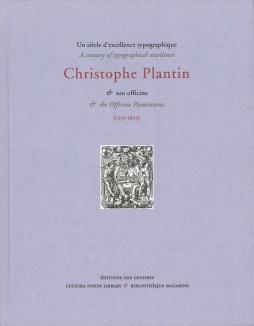
- Description
- Paris, Éditions des Cendres, 2020 265x205 mm. 504 pp. 150 colored ill. Hardcover.
- language
- French

Christophe Plantin et son Officine et the Officina Plantiniana (1555-1655)
Goran Proot, Yann Sordet, Christophe Vellet
Originally from Touraine, Christophe Plantin moved to Antwerp, a hub of international trade, around 1549. In 1555, he laid the foundations of the largest printing company in early modern Europe. A business genius and talented typographer, he made his business, which was known as the “Golden Compass”, one of the most important editorial supporters of the Counter-Reformation, although this did not prevent him from engaging in some clandestine activities. From the outset, Plantin’s output was distinguished by its elegance. Its correspondence and the exceptionally well-preserved company archives bear witness to its extensive commercial ambitions and the extreme care taken in designing its books. The first century of activity of the Plantin-Moretus company, particularly brilliant, its editorial strategies and the requirements of its production are at the heart of this work. It shows how Christophe Plantin and his successors transformed the aesthetics of the Renaissance book and inaugurated the baroque era of page layout, by mobilizing new typographic and ornamental material, by promoting copperplate engraving, and by making special use of the painter Peter Paul Rubens and other talented illustrators and engravers (Pieter van der Borcht, the brothers Wierix, Charles de Mallery or Cornelis Galle). This book was published on the occasion of the celebration for the fifth centenary of the birth of Christophe Plantin (circa 1520-1589).
